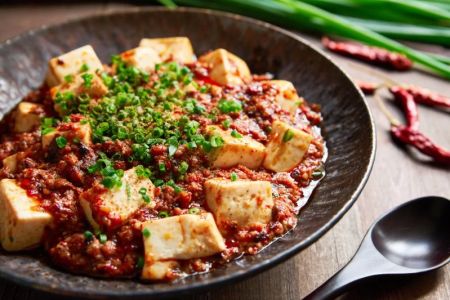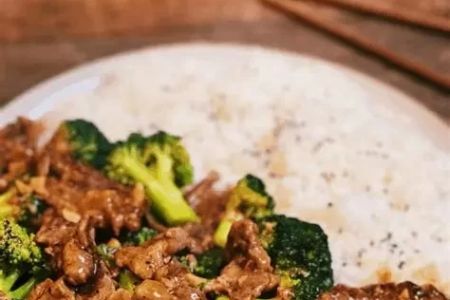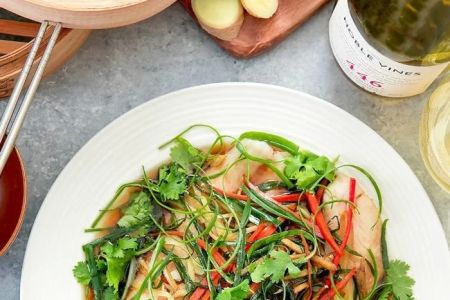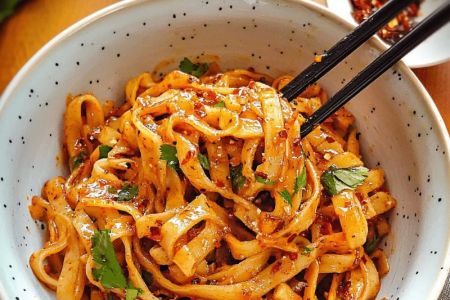The Difference Between Chinese Food and Other Asian Cuisines
- Introduction to Asian Cuisines
- Key Differences in Chinese and Other Asian Cuisines
- Chinese Culinary Traditions
- Regional Variations in Asian Cuisines
- Case Study: Chinese vs. Japanese Food
- How to Experience Authentic Chinese Food
- Why Chinese Food is Unique and Popular Worldwide
1. Introduction to Asian Cuisines
Asian cuisine is incredibly diverse, with each country offering a unique food culture. From the rich, savory flavors of Chinese food to the light, delicate tastes of Japanese cuisine, the continent's culinary landscape is a treasure trove of variety. But what sets Chinese food apart from other Asian cuisines? In this article, we'll explore the distinct differences between Chinese food and other popular Asian cuisines.
2. Key Differences in Chinese and Other Asian Cuisines
The most noticeable difference between Chinese food and other Asian cuisines lies in their ingredients, cooking techniques, and flavor profiles. Chinese food is known for its bold flavors, such as sweet, sour, salty, and spicy, all harmonized to create a balanced taste. In contrast, other Asian cuisines like Thai, Vietnamese, and Japanese, focus on lighter, more subtle flavors.
Chinese cuisine uses a wide range of ingredients such as soy sauce, ginger, garlic, and sesame oil, with an emphasis on stir-frying, steaming, and braising. Other Asian cuisines, like Japanese food, rely heavily on seafood and rice, with simpler seasoning techniques such as dashi (soup stock) and miso paste.
3. Chinese Culinary Traditions
Chinese culinary traditions have deep roots in history, with practices and methods that have been passed down through generations. From the delicate dim sum of Cantonese cuisine to the fiery Szechuan dishes, Chinese food has evolved in different regions, each bringing its distinct flavor and preparation style.
Cooking methods such as wok-frying, steaming, and braising are essential parts of Chinese food culture, while other Asian countries might emphasize different methods like grilling or boiling. The use of herbs and spices, such as five-spice powder and star anise, defines many Chinese dishes and creates the complexity and richness in flavor that many people associate with Chinese food.
4. Regional Variations in Asian Cuisines
Asian cuisines are incredibly diverse, and their regional variations are what make them so intriguing. For example, in Chinese cuisine, northern dishes like dumplings and noodles are staples, while southern dishes often feature rice and seafood. Similarly, Japanese cuisine focuses on fresh ingredients, sushi, and light broths, whereas Thai cuisine offers bold, spicy dishes with complex flavor combinations of sweet, sour, salty, and spicy.
Understanding these regional distinctions helps in appreciating how Chinese food differs from the broader spectrum of Asian culinary traditions. The way each culture uses local ingredients and adapts cooking methods reveals a lot about its food culture and history.
5. Case Study: Chinese vs. Japanese Food
Let's take a deeper dive into a direct comparison between Chinese and Japanese food. While both are Asian cuisines, their approaches are quite different. Chinese food, as mentioned, is bold and robust, with an emphasis on deep-frying, stir-frying, and creating sauces that coat the ingredients. Japanese food, on the other hand, tends to emphasize fresh, raw ingredients and minimalist seasoning. Sushi and sashimi, for instance, focus on the quality of the fish and rice, with little embellishment.
In Chinese cuisine, dishes like Peking duck and Kung Pao chicken are celebrated for their strong flavors and rich sauces, while Japanese cuisine leans toward the simplicity and freshness of raw fish in dishes like sushi and tempura.
6. How to Experience Authentic Chinese Food
If you're curious about tasting authentic Chinese food, there are a few tips to make the experience unforgettable. Start by looking for local Chinese restaurants that offer regional specialties, like dim sum in Hong Kong-style eateries or hot pots in Sichuan restaurants. If you're visiting China, be sure to explore the local food scene by trying street food, such as dumplings and baozi, for a truly authentic taste.
Trying authentic Chinese food means stepping out of the comfort zone of basic takeout dishes. Opt for traditional Chinese meals that might not be commonly available outside of China for the full experience.
7. Why Chinese Food is Unique and Popular Worldwide
Chinese food has become a global favorite due to its unique flavors, variety, and versatility. From the popular General Tso's chicken to the unique flavors of Cantonese cuisine, Chinese food has successfully adapted to local tastes across the world while maintaining its rich culinary traditions. It's the balance of flavors and the adaptability of ingredients that have made Chinese food a beloved option for people of all backgrounds.
Whether you're enjoying a meal at a Chinese restaurant or cooking up some traditional dishes at home, Chinese food offers a depth of flavor and cultural history that is both fascinating and delicious. To explore more about Chinese food, be sure to visit Chinese Food for a wide selection of authentic ingredients and recipes.







